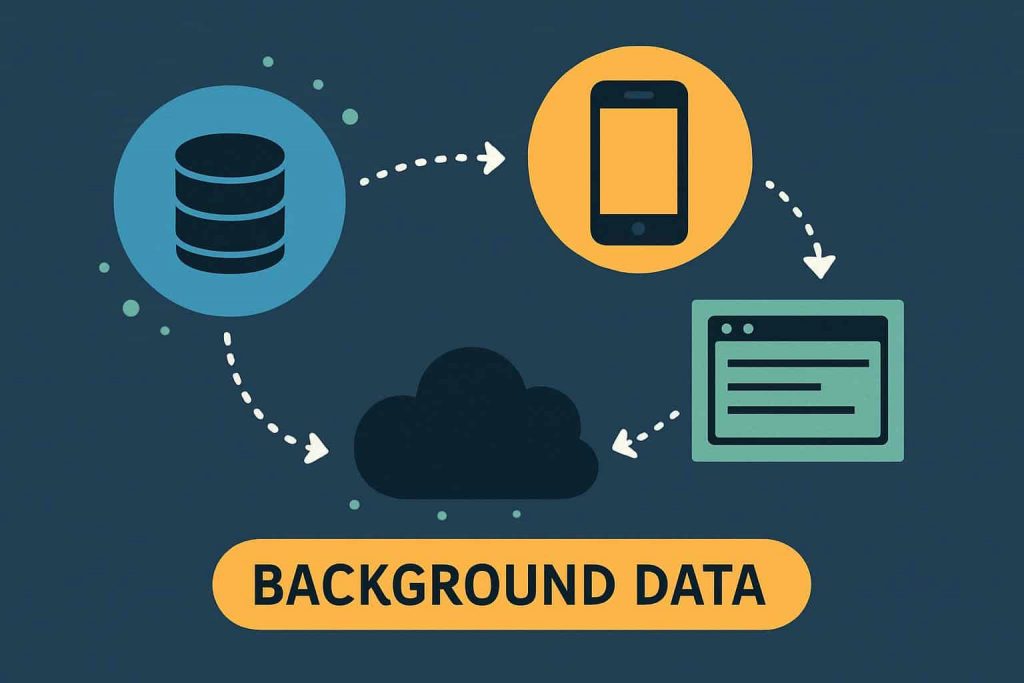
When most people think about digital privacy, they picture hackers guessing passwords or someone sniffing traffic on public Wi-Fi. And while those are real risks, one of the most powerful threats doesn’t happen while you’re typing, browsing, or even actively holding your phone.
It happens silently — in the background — with permissions you forgot you approved.
Welcome to the world of ghost permissions.
These are app permissions that continue operating long after an app stops being used — sometimes even after you think you deleted it — quietly collecting location history, contact metadata, device identifiers, and behavior patterns. The result is a privacy threat more pervasive than a bad password: data harvesting you never notice happening.
What Are Ghost Permissions?
Ghost permissions refer to ongoing or hidden access an app has to your device’s features, files, and behavior even when:
✅ You’re not actively using the app
✅ It’s running in the background
✅ You’ve disabled notifications or minimized it
✅ You haven’t opened it in months — or years
In some cases, permissions persist even after uninstalling the app because cached settings, companion services, or cloud-linked accounts continue transmitting data.
Think of it like a house guest who leaves… but keeps a copy of the key.
Why Does This Happen?
There are three primary causes:
1. Over-Permissioned Apps
Many apps ask for far more access than they need:
- Flashlight apps requesting contact access
- Games asking for precise location data
- Productivity tools reading your texts
Why? Because data is profit. Location history, device IDs, and contact metadata are valuable to advertisers, data brokers, and analytics platforms.
2. Dormant Apps You Forgot About
We install apps for:
- A one-time coupon
- Conference badge scanning
- “Try this new social tool” moments
- Travel or delivery once-offs
Then forget them — while they continue pinging servers with device behavior data.
3. Permission Creep
An app’s initial scope may be harmless.
Then comes an update:
“We’ve improved your experience! We now need access to your microphone.”
Except… nothing about the app’s core function requires a microphone.
What Data Is Being Collected?
Ghost permissions can quietly allow access to:
| Type of Data | What It Reveals |
|---|---|
| Location History | Routines, workplace, religion, lifestyle, political events attended |
| Contact Metadata | Your network, business relationships, family profiles |
| Sensors (Mic/Camera) | Ambient sound, room activity patterns |
| Accelerometer/Gyroscope | Walking habits, travel method, sleep rhythms |
| Clipboard Access | Passwords, 2FA codes, personal notes, crypto wallet keys |
| Device Identifiers | Linking your identity across apps & websites |
Even when content isn’t read — meta-data is a goldmine. Knowing who you talk to and when tells a full story without ever reading a message.
Why It Matters More Than Ever
Ghost permissions are not hypothetical. They have already been used to:
- Track military personnel (Strava heat map incident)
- Correlate device IDs to real-world identities
- Create psychographic ad profiles
- Influence elections and buying behavior
- Build shadow health profiles (period tracker controversies)
- Target individuals via location trails (retail analytics)
And as AI models increasingly feed on personal behavioral data, your phone becomes a 24/7 biometric and behavioral sensor.
How to Detect & Prevent Ghost Permissions
✅ 1. Audit App Permissions Monthly
Both Android & iOS now provide permission dashboards:
- Camera, location, microphone
- Background access
- Clipboard usage (iOS alerts)
Remove any permission not essential to app function.
✅ 2. Delete Dormant Apps
If you haven’t used it in 90 days, you don’t need it.
Minimal apps = minimal attack surface.
✅ 3. Enable Auto-Revoking Permissions
Modern systems can revoke unused app permissions automatically.
✅ 4. Avoid “Sign in with Social Account”
Convenient, but feeds your social identity everywhere.
Use email with randomly generated passwords or passkeys instead.
✅ 5. Review App Background Activity
On iOS and Android:
Settings → Battery/Background
Look for apps using power when they shouldn’t.
✅ 6. Block Tracking at Network Level
Power moves:
- DNS filtering (NextDNS, ControlD, Pi-hole)
- OS-level firewall rules
- VPNs with tracker-blocking
✅ 7. Be Permission-Skeptical
If a calendar app wants Bluetooth access…
Ask yourself why?
Red Flags to Watch For
Avoid apps that:
🚩 Request unrelated permissions
🚩 Require always-on location
🚩 Have vague or boilerplate privacy policies
🚩 Come from unknown developers
🚩 Ask for microphone/camera access without purpose
🚩 Fill your notifications with “Please enable…” nags
If an app begs for access it doesn’t clearly need, that’s not convenience — that’s hunger.
Future Trend: Zero-Trust Mobile Security
Corporate security uses zero-trust models; consumers are next.
Upcoming user norms:
- Temporary permissions only
- Randomized device identifiers
- Data sandboxing
- Explicit consent for background behavior
- Privacy-first app stores
- AI privacy guardians monitoring device behavior
Soon, your phone will warn you:
This app accessed your clipboard 3 times while idle.
And you’ll delete it immediately.
Your Data Isn’t “Free” — You’re Paying With It
Ghost permissions aren’t just about privacy — they affect:
- Safety
- Identity security
- Fraud risk
- Mental & behavioral profiling
- Reputation & confidentiality
- Long-term data footprint
Tech companies don’t need to hack you when you unlock the door yourself.
You don’t need paranoia — just awareness.
Final Thought
You can lock your front door, but if a stranger has a spare key you didn’t know about, are you truly secure?
Audit your digital home.
Your data — and your future self — will thank you.
Leave a Reply